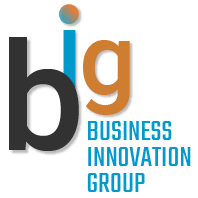This article is written in collaboration with Jenny Tsao and Anush Naghshineh.
Introduction
Private equity (PE) firms are discovering something important: the people working at their portfolio companies might be their most valuable asset. Instead of treating each company’s workforce separately, forward-thinking PE firms are now creating talent pools that span all their companies. This approach moves beyond traditional financial strategies and focuses on something more practical – helping talented people move between companies to solve problems and drive growth.
This new approach makes good business sense. By letting employees move between portfolio companies, PE firms save money on recruiting, keep valuable people who want new challenges, and get work done faster. Perhaps most importantly, when experts can work across multiple companies, they bring specialized knowledge and fresh ideas that create advantages no single company could develop alone.
The Economics of Portfolio-Wide Talent Optimization
When PE firms look at value creation levers, talent optimization across their entire portfolio represents one of the highest potential opportunities. The numbers tell a compelling story about why breaking down talent silos between portfolio companies makes financial sense.
Externally recruiting new talent costs companies as much as 200% of an employee’s annual salary, according to research by SHRM. For more specialized roles or executive positions, the costs are often higher. By contrast, internal hiring typically costs 25-50% less while delivering faster time-to-productivity since these employees are already proven and understand the broader organizational context.
Beyond the direct cost savings, portfolio-wide talent deployment drives performance improvements through better skills matching. McKinsey research shows that companies with highly effective talent mobility programs achieve 30% higher returns on their human capital investments and demonstrate 12% higher organizational performance metrics. When people are matched to opportunities that leverage their strengths across a broader opportunity landscape, their productivity naturally increases.
Companies with robust internal mobility programs experience 33% higher retention rates, according to LinkedIn’s 2023 Workplace Learning Report. In portfolio companies where growth opportunities might otherwise be limited by organizational size, cross-portfolio talent movement expands career paths dramatically, increasing retention.
Knowledge retention also adds substantial value, and when talent moves between portfolio companies, they bring operational insights, process improvements, and cultural elements that enhance performance. This cross-pollination effect is particularly valuable to recent acquisitions that need operational improvement.
For PE firms managing multiple companies in related sectors, this portfolio effect compounds over time, creating an increasingly valuable talent ecosystem that becomes a competitive advantage in both operations and future acquisitions.
AI Technologies for Talent Matching and Development
The concept of cross-portfolio talent mobility isn’t new, but what’s changed is the technological capability to implement it effectively at scale. Several AI technologies now make it possible to create sophisticated internal talent marketplaces that weren’t feasible even five years ago.
The foundation of any effective talent marketplace is a comprehensive skills ontology, which is essentially a standardized language for describing capabilities across diverse businesses. Modern AI systems can analyze job descriptions, performance data, and work products to create unified skills frameworks that work across different industries and company cultures within a portfolio. These systems expand and refine their understanding as they process more information and become increasingly accurate over time.
Natural language processing (NLP) capabilities have advanced dramatically, enabling systems to extract meaningful insights from unstructured data like resumes, performance reviews, and project documentation. NLP based tools do more than simple keyword matching. They understand the semantic relationships between skills and experiences, thereby uncovering transferable capabilities that might not be obvious in a traditional recruiting process.
For example, a financial analyst in one portfolio company might have relevant skills for a revenue optimization role in another portfolio business, even though their vertical industry experience doesn’t align. These connections often go undiscovered in traditional recruitment but become visible through AI-powered matching.
Career path prediction models help identify non-linear career opportunities that leverage transferable skills. They can create development paths that might cross between portfolio companies in ways human recruiters wouldn’t traditionally consider.
Competency assessments have advanced beyond self-reporting and manager evaluations. AI systems can be used to analyze actual work products, patterns of communication, and results-based metrics to create objective skill profiles. This approach helps identify potential top performers who might be overlooked in traditional review/promotion cycles.
What makes these technologies particularly valuable for PE firms is their ability to operate across portfolio companies with different HR systems, organizational structures, and industry-specific terminology. The AI systems create a unified talent view while respecting the operational independence of portfolio companies.
Implementing a Portfolio Talent Marketplace
According to a Spencer Stuart survey, private equity firms have increased their focus on appointing a portfolio talent leader by 20%. This marks a significant shift that underscores the importance of effectively leading and managing the organization’s human capital assets.
The talent leader should identify and integrate a comprehensive network of qualified candidates across the portfolio and establish a structured system that enables resource identification and sharing.
There are some key steps to implementing such a marketplace:
- Executive Search and Networking Events: Maximize outreach and explore talent pools outside of immediate known networks.
- Centralized Talent Database: Capture skills, experiences, and career aspirations.
- Policies and Guidelines: Define the rules of engagement, interim, and fractional expectations.
- Executive Buy-In and AI-Powered Matching: AI-driven software that matches employees with culture, roles, and projects or mentorship opportunities across the portfolio.
- Employee Engagement & Participation Incentives: Educate employees on the benefits of career mobility within the portfolio and cross-pollination.
- Continuous Monitoring and Feedback: Data analytics are used to track the success of individuals based on feedback in a 360-degree view.
By viewing talent as a collective asset instead of a company-specific resource, PE firms can cultivate a more agile and resilient workforce that swiftly adapts to market changes and can be deployed close to business opportunities.
Conclusion
As PE firms focus more on improving how companies operate rather than just financial deals, the most successful ones will be those who get good at moving talent where it’s needed most. Using new technology, setting clear rules for how talent sharing works, and creating a culture where job mobility is encouraged will help PE firms get more value from their investments. There are obstacles to overcome, from implementing the right resources (software, etc.) to changing how people think about their careers. However, the potential payoff is huge. In today’s business environment, having the right people in the right places increasingly determines who wins, and PE firms that build effective talent-sharing systems will have an edge that’s hard for competitors to match.

